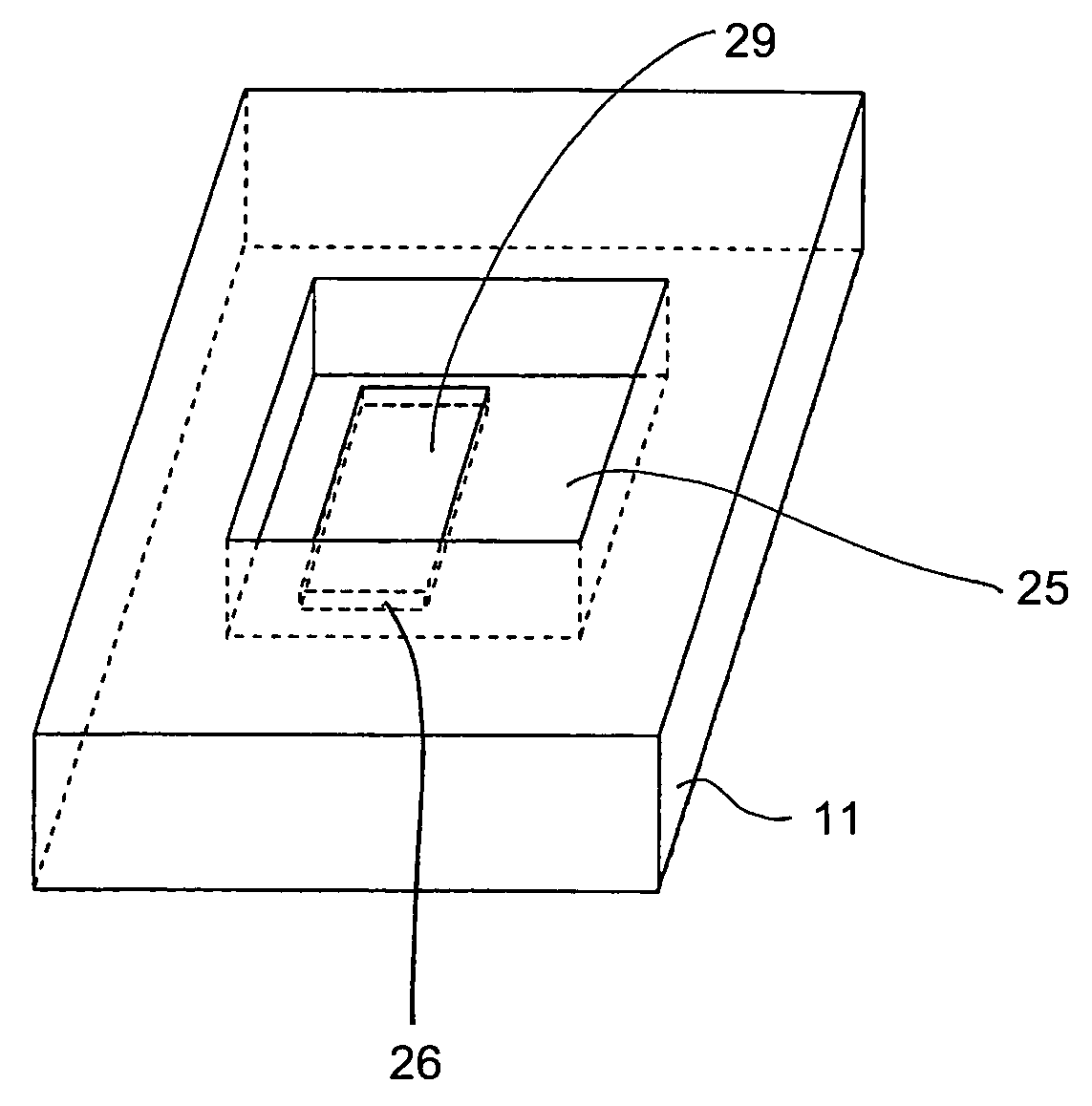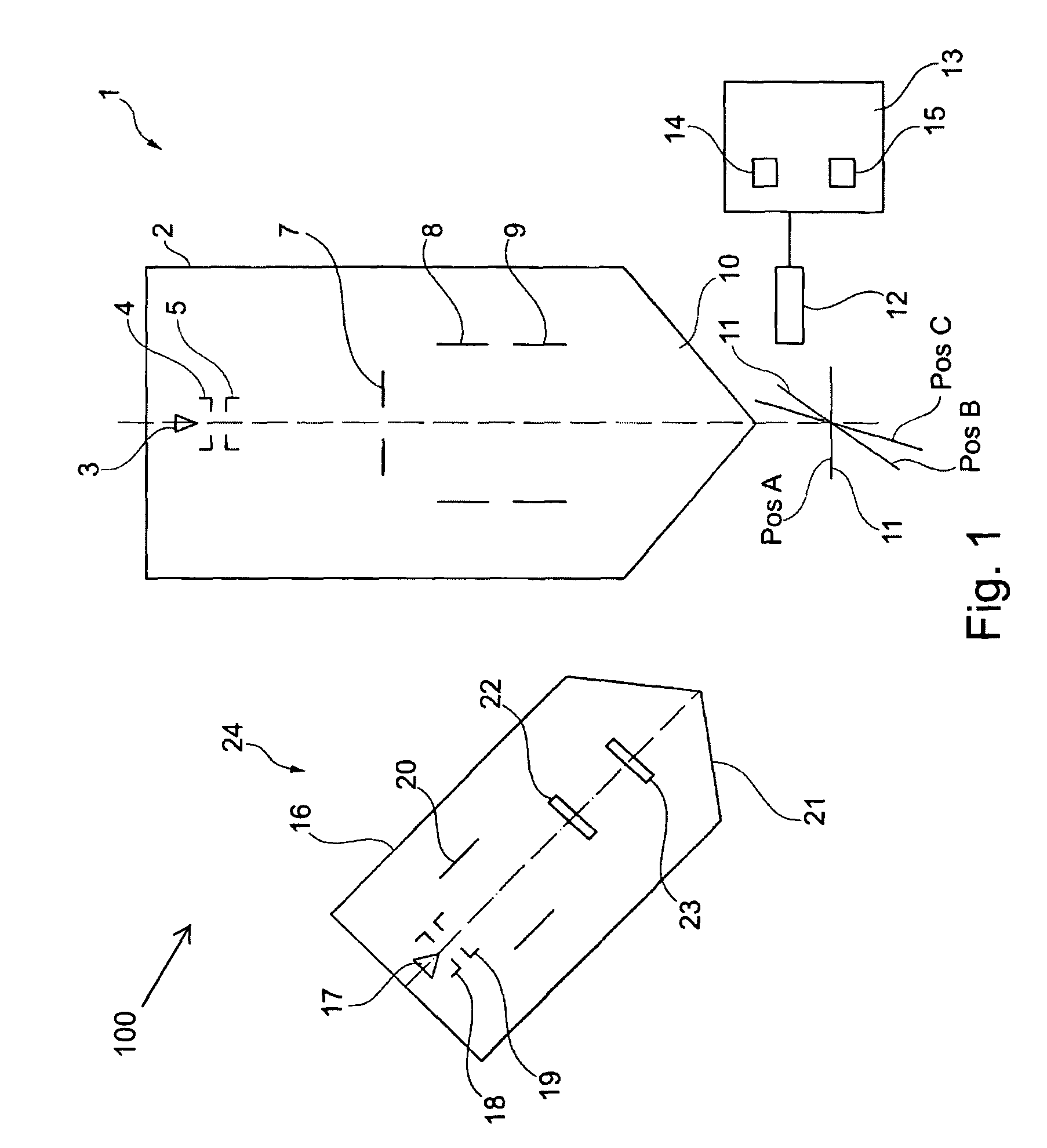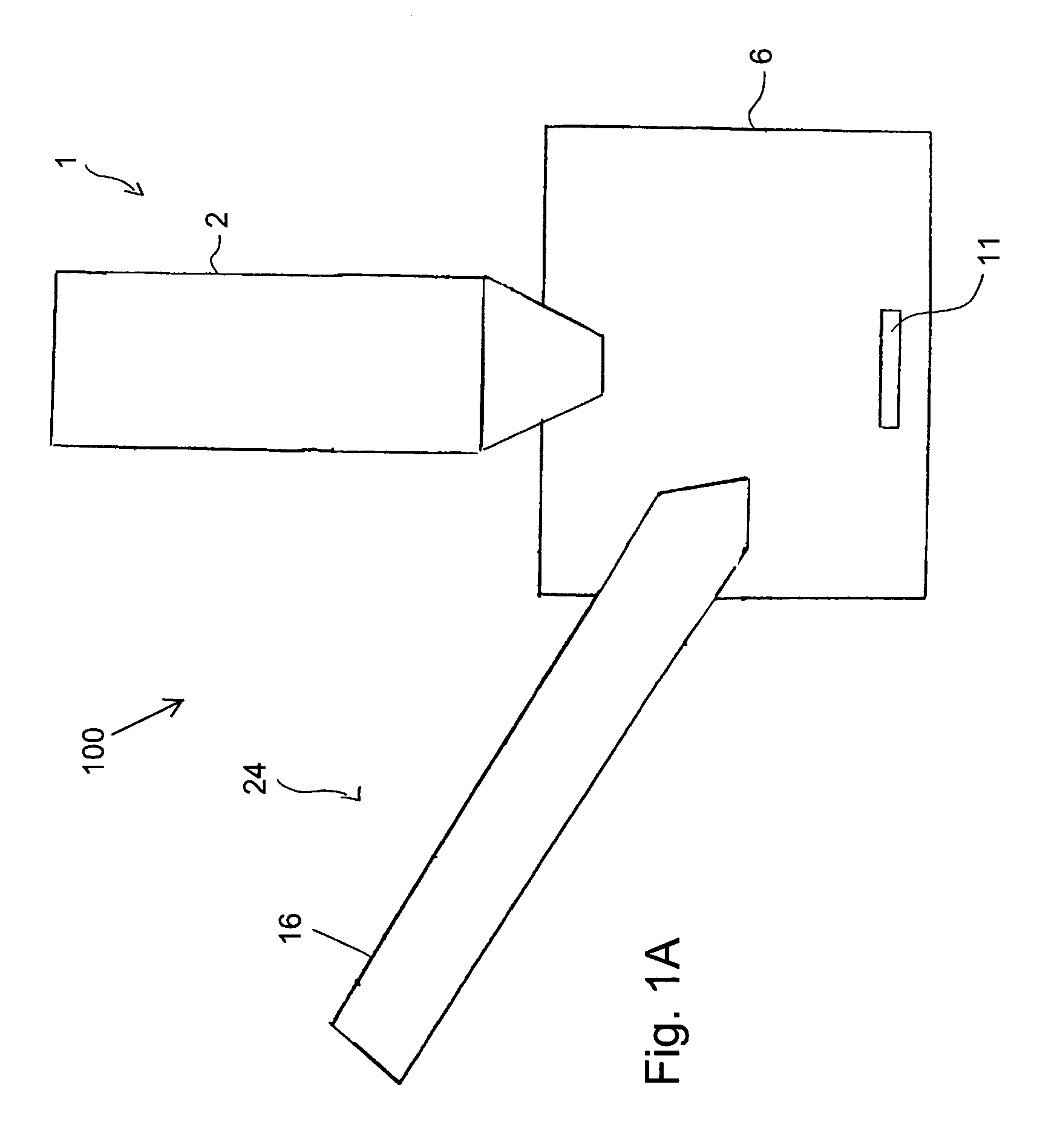Charged particle beam analysis while part of a sample to be analyzed remains in a generated opening of the sample
a particle beam and charge technology, applied in the field of sample analysis, can solve the problems of sample contamination sample to be analyzed, etc., and achieve the effect of preventing further examination with the aid of the second particle beam device (transmission electron microscope)
- Summary
- Abstract
- Description
- Claims
- Application Information
AI Technical Summary
Benefits of technology
Problems solved by technology
Method used
Image
Examples
Embodiment Construction
[0044]FIGS. 1 and 1A show a schematic representation of a particle beam device 100 which has an ion beam device 1 and an electron beam device 24, which are arranged at a sample chamber 6 (vacuum chamber) according to an embodiment of the system described herein. Methods for analyzing a sample, as further discussed elsewhere herein, may be carried out using the illustrated particle beam device 100.
[0045]The ion beam device 1 may have an ion beam column 2 in which numerous units of the ion beam device 1 are situated. In particular, an ion source 3 may be situated in the ion beam column 2. The ion source 3 may generate ions which form an ion beam in the ion beam column 2. The ions may be accelerated to a predefinable potential with the aid of an electrode 4 and then passed through a condenser lens 5. The ion beam formed by the ions may be passed through an aperture 7 and then reach a first deflecting system 8 and a second deflecting system 9, which may comprise a scanning device. The i...
PUM
 Login to View More
Login to View More Abstract
Description
Claims
Application Information
 Login to View More
Login to View More - R&D
- Intellectual Property
- Life Sciences
- Materials
- Tech Scout
- Unparalleled Data Quality
- Higher Quality Content
- 60% Fewer Hallucinations
Browse by: Latest US Patents, China's latest patents, Technical Efficacy Thesaurus, Application Domain, Technology Topic, Popular Technical Reports.
© 2025 PatSnap. All rights reserved.Legal|Privacy policy|Modern Slavery Act Transparency Statement|Sitemap|About US| Contact US: help@patsnap.com



